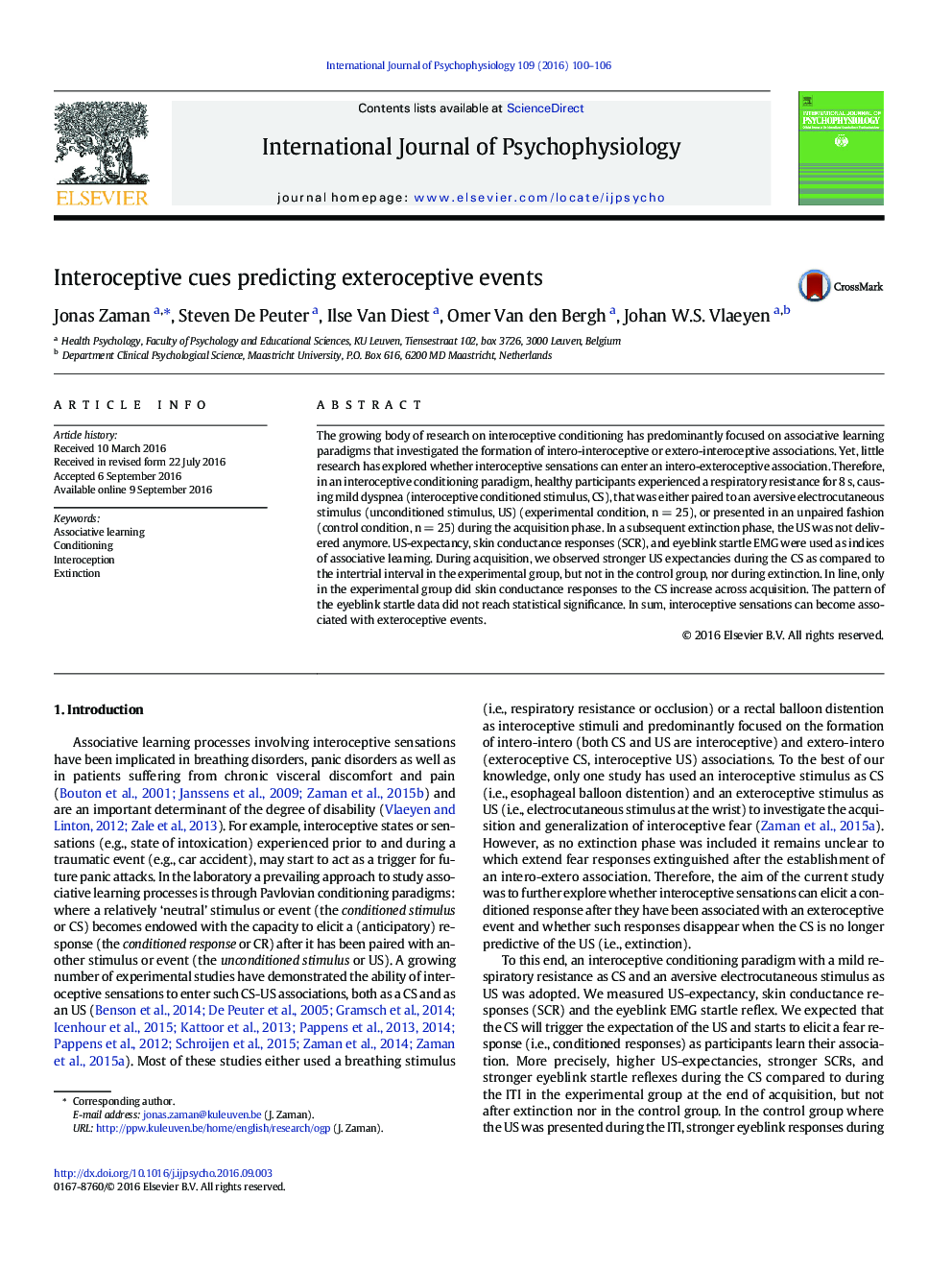| کد مقاله | کد نشریه | سال انتشار | مقاله انگلیسی | نسخه تمام متن |
|---|---|---|---|---|
| 5042421 | 1474387 | 2016 | 7 صفحه PDF | دانلود رایگان |

- Intero-extero associations can be acquired.
- During acquisition skin conductance responses increased in the experimental group only.
- Across acquisition US-expectancy ratings during the CS increased in the experimental group only.
- During extinction no group differences were observed.
The growing body of research on interoceptive conditioning has predominantly focused on associative learning paradigms that investigated the formation of intero-interoceptive or extero-interoceptive associations. Yet, little research has explored whether interoceptive sensations can enter an intero-exteroceptive association. Therefore, in an interoceptive conditioning paradigm, healthy participants experienced a respiratory resistance for 8 s, causing mild dyspnea (interoceptive conditioned stimulus, CS), that was either paired to an aversive electrocutaneous stimulus (unconditioned stimulus, US) (experimental condition, n = 25), or presented in an unpaired fashion (control condition, n = 25) during the acquisition phase. In a subsequent extinction phase, the US was not delivered anymore. US-expectancy, skin conductance responses (SCR), and eyeblink startle EMG were used as indices of associative learning. During acquisition, we observed stronger US expectancies during the CS as compared to the intertrial interval in the experimental group, but not in the control group, nor during extinction. In line, only in the experimental group did skin conductance responses to the CS increase across acquisition. The pattern of the eyeblink startle data did not reach statistical significance. In sum, interoceptive sensations can become associated with exteroceptive events.
Journal: International Journal of Psychophysiology - Volume 109, November 2016, Pages 100-106